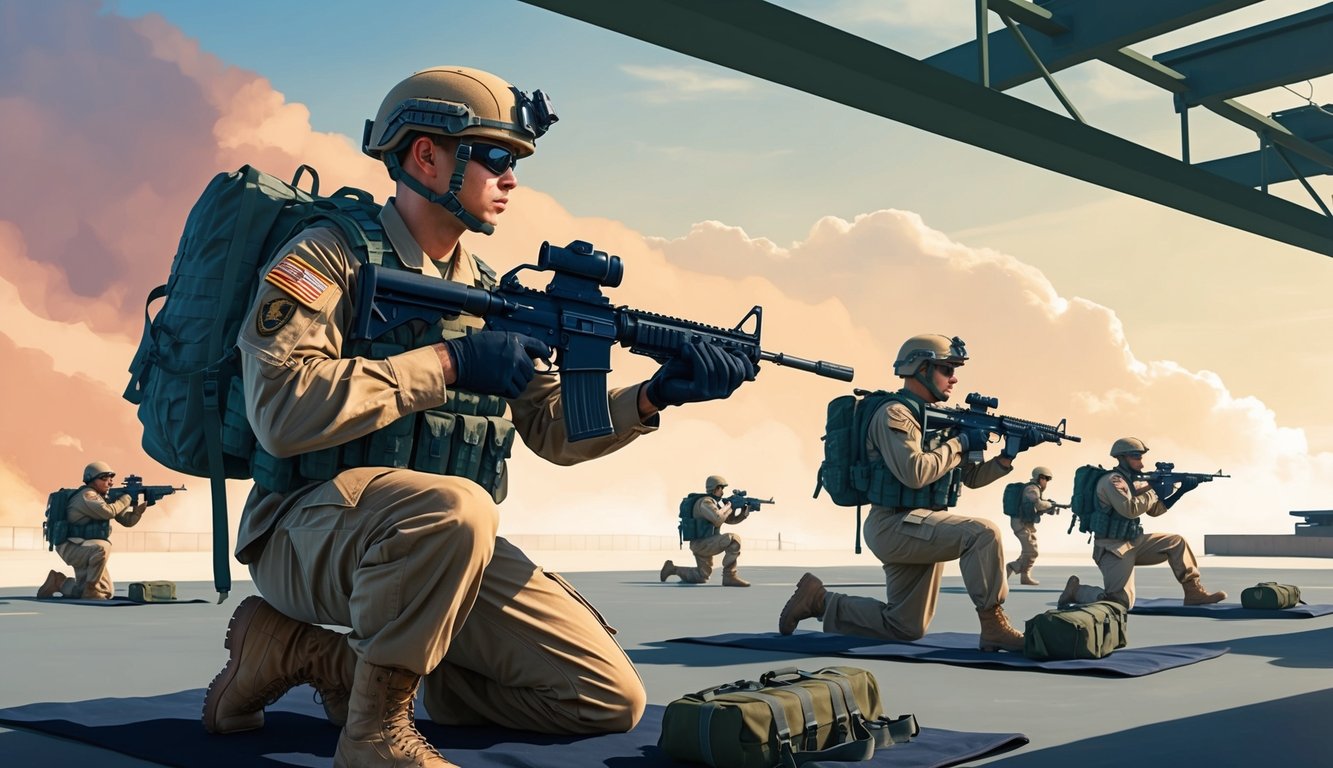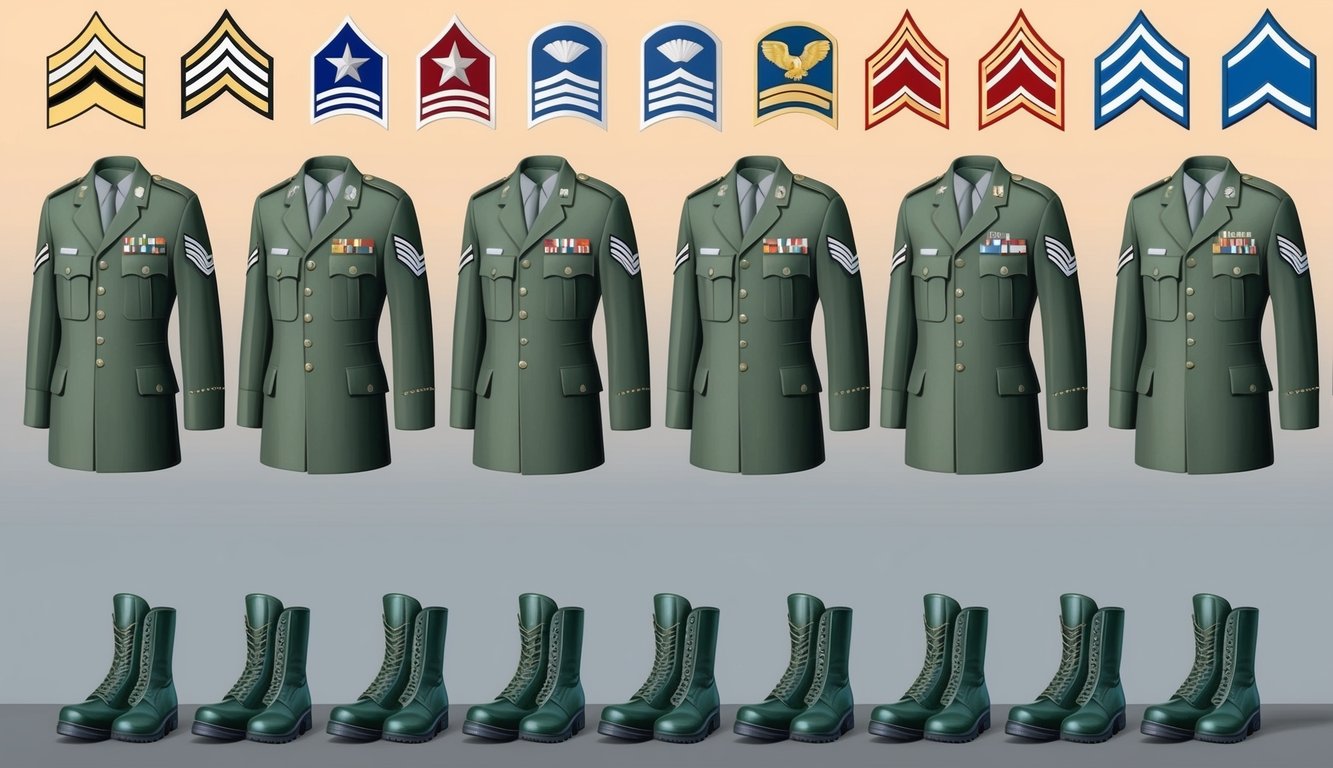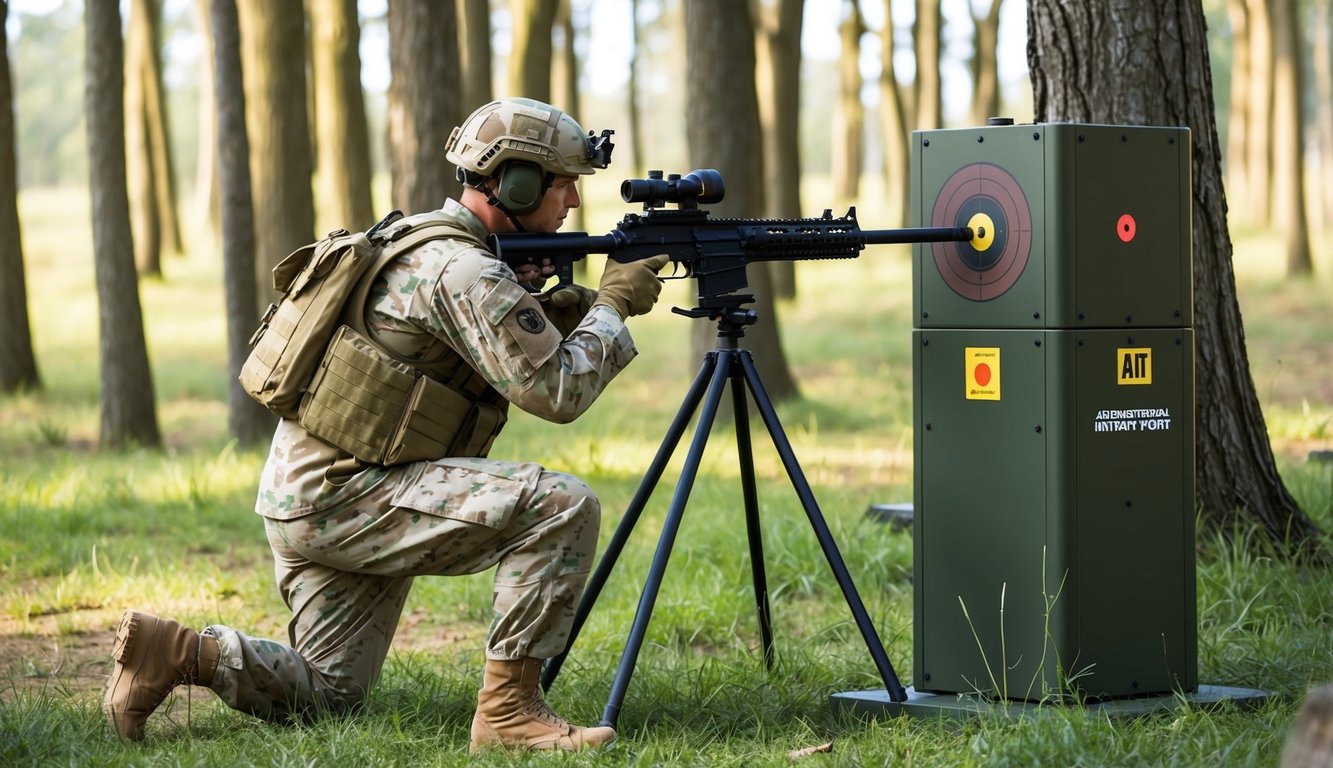“`xml
Advanced Individual Training (AIT) represents a vital stage in a soldier’s military career.
This specialized instruction occurs after Basic Combat Training and is centered around the soldier’s specific Military Occupational Specialty (MOS), serving as an introduction to their new role in the Army.
During AIT, soldiers thoroughly explore the skills and knowledge pertinent to their designated roles.
Regardless of whether they are training for infantry, communications, or medical services, AIT is where they learn the foundational aspects of their new position.
The duration of AIT is contingent upon the soldier’s MOS, ranging from a few weeks to several months.
Besides focusing on technical expertise, AIT is also a time for soldiers to enhance their physical fitness, discipline, and leadership skills.
Connections formed with fellow soldiers during this training create a supportive network that can endure throughout their military service and into civilian life.
Key Takeaways
- AIT delivers tailored training for your specific military role following basic training.
- The length and location of AIT differ based on your selected Military Occupational Specialty.
- In addition to technical abilities, AIT fosters essential military qualities such as discipline and teamwork.
AIT in the Context of Military Training
Advanced Individual Training is an essential phase in a soldier’s development, building on the foundation established during Basic Combat Training to focus on specialized skills for distinct military positions.
Transition from Basic Training to AIT
Upon finishing Basic Training, soldiers transition to AIT, marking a move from general military skills to targeted job training.
This often involves relocation to join others pursuing similar career paths.
AIT prioritizes hands-on learning and practical engagement.
Soldiers engage in a thorough exploration of their chosen Military Occupational Specialty (MOS) within a structured yet flexible environment compared to Basic Training.
Training combines classroom education with practical field exercises.
Soldiers gain experience with the equipment and technology relevant to their duties, under the guidance of knowledgeable instructors who are typically experienced soldiers.
Phases of AIT: Understanding Phase IV and Phase V
The AIT program is generally segmented into phases, with Phase IV and Phase V being critical points of progression.
Phase IV signifies the beginning of AIT, where soldiers adapt to their new setting and commence their specialized training.
During this phase, soldiers enjoy greater privileges than in Basic Training, potentially receiving weekend passes or the option to wear civilian attire during off-duty times.
Phase V represents the culminating stage before graduation, where soldiers apply their acquired knowledge in realistic scenarios.
This phase is a significant assessment of their preparation for military service.
Leadership opportunities are heightened in Phase V, where soldiers may lead small teams or assume additional responsibilities.
Successful completion of this phase leads to graduation and the assignment of their first duty station.
The Structure and Purpose of AIT
Advanced Individual Training (AIT) prepares new Army personnel with specialized skills tailored for their roles.
This step follows Basic Combat Training and is customized for each soldier’s designated Military Occupational Specialty.
Definition of Military Occupational Specialty (MOS)
Your MOS represents your job function in the Army, represented by a code specifying your field and role.
During AIT, soldiers focus on acquiring the competencies required for their selected MOS, which may range from an intelligence analyst to a combat medic.
With over 150 different MOS options, each necessitating distinct training, the length and location of AIT are influenced by the selected specialty.
While some roles require mere weeks of instruction, others might take several months of intensive training.
AIT Schools and Locations
AIT is conducted at various Army installations across the United States, with each site specializing in training for specific MOSs.
For instance, individuals training to become an infantryman will likely be stationed at Fort Benning, Georgia.
Other common AIT locations include:
- Fort Leonard Wood, Missouri (Military Police, Engineers)
- Fort Sill, Oklahoma (Artillery)
- Fort Jackson, South Carolina (Chaplain Assistants, Finance Specialists)
- Fort Sam Houston, Texas (Combat Medics)
- Fort Lee, Virginia (Logistics, Quartermaster)
At these training facilities, soldiers balance classroom sessions with hands-on field exercises, aiming to ensure they are skilled in their roles before joining their first unit.
Key Skills and Experiences Gained in AIT

AIT equips soldiers with specialized capabilities and practical knowledge vital for their military professions.
They develop both technical expertise and strategic acumen relevant to their specific Military Occupational Specialty (MOS).
Technical and Tactical Expertise
In AIT, soldiers receive firsthand experience with equipment and systems pertinent to their positions.
Mechanical specialties may involve training in engine repair or vehicle maintenance, while electrical tracks focus on power distribution and communications systems.
Soldiers will also enhance their critical thinking and problem-solving abilities, essential for navigating real-world challenges they will encounter in their roles.
Tactical training forms a critical component.
Soldiers will learn to apply their technical knowledge in simulated combat settings to prepare for military operations’ demands.
Moreover, leadership and collaboration are central themes throughout AIT, as soldiers frequently work in teams, reflecting the collective nature of military service.
Specialized AIT Tracks
Distinct MOS paths offer varied skill sets.
In armor training, soldiers master tank operations and maintenance, while aviation tracks educate them in flight mechanics and aircraft systems.
Engineering AIT emphasizes construction methods and explosive handling, and intelligence training develops analytical and information processing skills.
Logistics training addresses supply chain management and transportation coordination, while military police focus on law enforcement procedures and security techniques.
Technology-oriented tracks explore cybersecurity, network management, and advanced communication systems, while medical specialties impart comprehensive healthcare training.
Each AIT track is crafted to cultivate soldiers as experts in their respective fields, equipping them with job-ready skills beneficial in both military and civilian spheres.
Career Progression After AIT

Completing AIT signifies the onset of a soldier’s Army career pathway.
They will encounter opportunities for skill advancement, leadership roles, and further specialization.
Advanced Leadership and Specialized Schools
Following AIT, soldiers can attend advanced courses to bolster their skills.
The Basic Leader Course prepares them for non-commissioned officer positions, while Ranger School provides elite combat leadership training.
Additional training opportunities include Air Assault School, focusing on air assault operations, and Special Forces training for advanced tactical capabilities.
Soldiers also have the chance to enroll in specialized programs such as Airborne School for parachute training or Sniper School for precision shooting.
These courses enhance career prospects and unlock unique unit and mission opportunities.
Transition into Specific Army Roles
Your MOS sets the stage for your initial role, but career trajectories can evolve.
An Infantryman may advance to a team leader and then a squad leader, while M1 Armor Crewmen may progress to tank commanders.
Intelligence analysts might transition into senior positions or pivot into cyber operations.
Combat Engineers could specialize in demolitions or construction supervision, potentially ascending to platoon sergeant or first sergeant roles.
Certain MOSs even present pathways to becoming warrant officers, such as helicopter pilots or subject matter experts.
Advancement usually involves a combination of field experience, leadership courses, and further training.
There are also opportunities for cross-training in related skills, enhancing their expertise and overall contribution to the Army.
Frequently Asked Questions
AIT encompasses several fundamental components which soldiers often inquire about.
Training duration, phases, and the transition from basic training are common points of interest.
How long does AIT usually last?
The duration of AIT is variable and depends on the specific Military Occupational Specialty (MOS).
Some AIT programs run only a few weeks, while others may extend for several months.
For instance, Infantry and Armor soldiers participate in One Station Unit Training (OSUT), which combines Basic Training and AIT.
Can you explain the different phases of AIT in the Army?
Typically, AIT consists of several phases.
The initial phase imposes stricter rules with limited privileges.
As soldiers progress, they gain increased freedoms and responsibilities.
For example, Phase IV usually lasts around 3-4 weeks and has the strictest limitations.
Is there a break between basic training and starting AIT?
Usually, there is no break between Basic Combat Training and AIT.
Most soldiers transition directly to AIT, enabling them to maintain their focus and momentum in their military education.
What happens once you complete AIT in the Army?
After finishing AIT, you are prepared to embark on your Army career.
You’ll receive orders for your first duty station or return to your National Guard or Reserve unit.
Your newly honed skills will be utilized in your assigned role within the Army.
Are there differences in AIT duration for Active Duty and Army Reserves?
The duration of AIT is generally consistent between Active Duty and Army Reserve soldiers.
The training’s content and length are dictated by the MOS rather than the service component.
Both groups receive equivalent specialized training for their selected fields.
During AIT, do military personnel receive compensation?
Yes, soldiers earn pay during AIT.
As trainees, they receive a regular salary based on their rank and time in service.
This compensation begins at the start of Basic Training and continues throughout their military career.
“`

